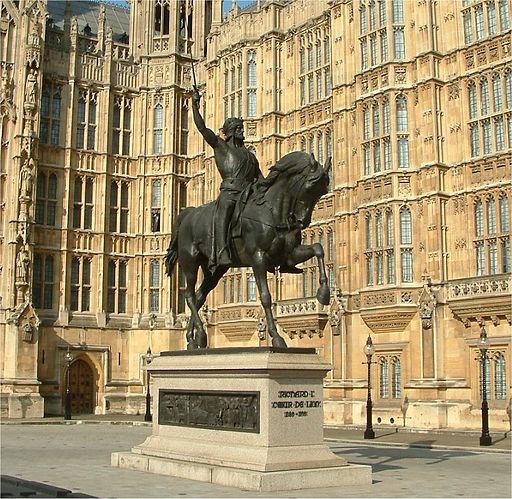He spent little time in England but one very famous king’s emblem is now on the lips of millions in the country he ruled but rarely visited. Football fans across the land are singing ‘Three Lions on a Shirt’ once more and it’s all thanks to Richard I.
England’s big win against the Netherlands in the semi-finals of the 2024 Euros gives the men’s team another chance at a major title. For those counting, it’s now 58 years of hurt that they’re trying to end but the story of those three lions is even older.
Appropriately known as Lionheart, Richard was the first English king to put a hat trick of lions on his coat of arms and his choice became the standard royal standard.He ruled England between 1189 and 1199 and by the final stages of his reign, the three lions were firmly in place on the Great Seal. Even though he died with no children, his choice of emblem lived on.
He collected his menagerie of menace through accidents of ancestry. His great grandfather, Henry I, used a single golden lion as an emblem for the first part of his reign. When he married for a second time, he adopted a lion from the family crest of his new bride, Adeliza of Louvain. Two lions doesn’t have quite the same ring, though.
Fast forward a few decades and Henry’s great grandson, Richard, was getting ready to choose an emblem of his own. He was the son of King Henry II of England and Eleanor of Aquitaine and his powerhouse of a mother also had a lion on her own family coat of arms. So Richard added a third lion to his personal crest and suddenly, we’re singing.
The three lions proved so popular that they reigned supreme on the English royal arms for over a century until Edward III added in some French lilies. But despite alterations and additions ever since, the three lions have always remained an integral part of the arms.
They ended up on England shirts when the Football Association was looking for an emblem for the kit its players would wear at international games in the late 19th century. They settled on the three lions and presumably gained royal permission (as this was 1879, that must mean that Queen Victoria was somewhat amused at the idea).
Look closely and you’ll see the lions have company with more royal links. There are also ten Tudor roses on the badge worn proudly by England’s footballers but, for some reason, the floral motif has never been as famous. But then ‘ten roses on a shirt’ doesn’t have quite the same ring.
The three lions on that shirt became the ultimate symbol of England’s footballers in 1996 when David Baddiel, Frank Skinner and the Lightening Seeds were asked to come up with a song to mark the team’s participation in that year’s Euros which were being played in the UK.
The single, a shift away from traditional official team songs, went straight to number 1 and became the anthem of the summer as England made it to the semi-finals before a heart breaker of a penalty shoot out which saw a certain Gareth Southgate send his attempt sky high and his team out of the tournament. It was re-recorded in 1998 for the World Cup and has been a fan favourite ever since.
In 2024, the Monarch who now wears the Crown once held by Richard I put his own spin on ‘three lions’. Charles III asked for the famous song to be played at Changing the Guard on the morning of England’s Euros semi final against the Netherlands. Hours later, they had won a famous victory which sent them to the final once more.
England now head to Berlin for another massive game with the men’s team hoping to emulate the Lionesses and become European champions. Let’s hope football is slightly keener to come home than Richard I, the King of England who spent less than a year in his realm but whose lasting legacy is a crest that now unites millions of people in hopes and dreams.


